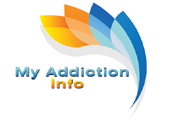
How Does Inpatient Rehab Cost?
What's In This Article?
If someone is facing an addiction to drugs or alcohol, inpatient rehab can have a significant impact in the recovery process. For inpatient rehab, the patient lives at the facility throughout the treatment process. You will need to study the options. The price is based on several factors, including:
- The kind of facility – Inpatient facilities cost more than outpatient facilities because they include lodging, meals, activities, and therapy.
- The facility location – Whether the facility is in the mountains or near the beach or whether it is near home.
- The program size – A smaller, more intimate facility will charge more than a larger program with multiple participants.
- Treatments offered – There are different kinds of treatment programs available and the kind of program used does affect the cost.
According to CostHelper, the cost of drug or alcohol rehab typically starts at about $2,000 or more for an outpatient program lasting up to 60 days and can cost anywhere from $6,000 to $30,000 for a 30-day residential or inpatient treatment program. A 90-day inpatient program can cost anywhere from $16,000 to $50,000.
How To Cover The Costs
Usually, group health insurance plans will cover the cost of inpatient rehab. Many individually purchased insurance plans will not cover the cost of rehab unless a specific rider was purchased to include it in the policy. Typical cost for those who have rehab covered by insurance include copays and coinsurance, which varies from 10% to 50%. Some insurance plans will cover rehab at 100% at the individual or family deductible has been met.
Some plans have limits on the number of days of treatment per year or a maximum dollar amount spent for rehab, but because of the 2008 Mental Health Parity and Addiction Equity Act, those limits cannot restrict care anymore than the limits placed on physical health services like physical therapy, physician visits, or surgery.
Individuals without health insurance coverage for rehab must cover the cost themselves. Inpatient treatment programs typically run from about $6,000 for 30 days to as much as $50,000 for 90 days. Additional treatment time might be offered if it is needed.
Additional treatment time might be available for a few thousand dollars per month. If inpatient rehab is not covered by your health insurance plan, it might be challenging to come up with resources to cover your expense for the substance abuse care. However, research shows that the cost of rehab is well worth the cost.
How The Cost of Rehab Outweighs Other Expenses
The National Institute on Drug Abuse reports that substance abuses cost the United States more than $600 billion every year. Despite inpatient rehabilitation being pricy, studies have shown that the costs of rehab are effective, reducing the health costs and social costs much more than the cost of treatment itself. Treatment costs less than incarcerating those abuse drugs. As an example, a full year of methadone maintenance is about $4,700 for a patient, but a full year of incarceration costs about $24,000.
Several estimates indicate that about every dollar that is invested in treatment programs for substance abusers provides a return of $4 to $7 in reduced drug-related criminal activity, theft, and criminal justice costs. When the savings for healthcare needs is included, the total savings can surpass the cost at a ratio of 12 to 1. The society and the individual also benefit greatly because there are fewer interpersonal conflicts, greater productivity in the workplace, and fewer accidents involving drugs, such as drug-related deaths and overdoses.
What Inpatient Rehab Should Include
Inpatient rehab should cover several things. Here are just a few things that you should expect from inpatient rehab:
- A clinical assessment and physical exam that touches on what substance is being abused, so the staff can establish a personalized plan of treatment.
- Those suffering from physical dependence on a drug usually undergo detoxification, which might take several days. This is supervised withdrawal that often involves the use of medication to reduce the effect of the symptoms, such as hallucinations, nausea, and tremors. Some prescription opioids, heroin, and alcohol might require a detoxification process.
- Individual counseling and group therapy are often involved, and the patient will live in the facility with restricted contact with friends and family, limited ability to leave the facility, and other limitations, so the patient must practice sober living.
- Many rehabs use the 12-step recovery process, which is based on belief in a higher power and the mindset that the patient has no control over the addiction.

